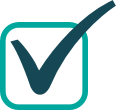The Problem
The majority of low-income households have at least one family member who works full-time, year round, and pays income taxes. And still they can't make ends meet, month after month. These families face constantly shifting needs and are often forced into impossible trade-offs among basic necessities:
visit the doctor or pay rent?
fix the car or buy food?
Unexpected expenses leave these households without stability, unable to get their feet on the ground. Existing social aid programs almost exclusively take the form of targeted aid, which is typically good at addressing one need at a time and consequently force them to navigate a huge web of bureaucracy in hopes of receiving the right form of help at the right time.
“It’s worse than living paycheck to paycheck. I am usually just one paycheck away from a total disaster.”
Minimum Wage is not a Living Wage
A living wage is the household income necessary to meet basic needs: rent, food, utilities, child care, transportation, income taxes.
Minimum wage has not kept pace with inflation. It leaves households with a significant income gap and traps families in poverty.
Family of 4, 2 adults working
Living Wage Household Income: $70,800
Household Income Gap: -$29,200
Minimum Wage Household Income: $41,600
44% of hourly paid workers in the US experienced a financial hardship in 2019
“I have three children so I can only work part-time. My husband got sick and lost his job last year.
The extra money you give each month was a relief while I looked for more work.”
No Cash Savings
Nearly 40% of Americans do not have $400 saved for an emergency, or to invest in themselves.
Low-income households struggle to build a cash reserve to weather a crisis, cover an unplanned expense. Savings habits are not modeled in their community; resources are not readily available.

“I used some of my last two DGL checks to open a savings account. My bank was offering a $400 match after making two deposits.
I plan to put some of my tax refund into this account, I want to save $800 so I don’t have to worry about an unexpected expense.”
Chronic poverty affects health and well-being
The recurring stressors of poverty increase the risk of mental health problems and substance abuse.
Children who grow up in low-income households are more likely to have poor academic achievement, drop out of high school, experience economic hardship as adults and be involved in the criminal justice system.
Adults who live in poverty have higher incidence of obesity and chronic disease, e.g. diabetes, high blood pressure, heart disease.
“I use the money to buy food so I don’t have to go to the food pantry as often.”
“I have been using the extra cash to buy my son’s medication because insurance doesn’t cover it. This makes me feel less stressed.”
Unrestricted, direct cash lifts families out of poverty
Increase Financial Security - close the living wage gap so households can meet their basic needs in real time without incurring debt.
Build Cash Savings - create the opportunity to establish savings habits, and the discipline to only use the savings for emergencies
Improve Overall Well-Being - reduce shame and health burdens brought on from chronic poverty; enable medical and dental health care
“I appreciated that I could spend the money on whatever I needed that month, you didn’t put restrictions on how I used it. My financial insecurity isn’t gone yet, but it’s much less and it’s really nice to have that relief. DGL helped me get back on my feet!”





